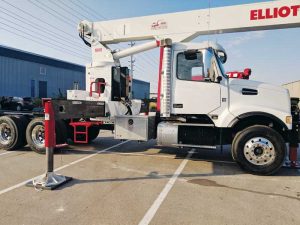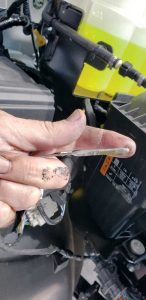By Bryan Wilkerson
Today’s challenging economic climate brought on by the pandemic has resulted in business uncertainty. Many factors are outside business owners’ hands. However, one thing that is within control, and one that has the biggest economic impacts on the modern sign company, is downtime.
The question is how can companies who own installation equipment or provide installation services, limit downtime and maximize use of equipment?
Downtime, in most jobs, is figured as billable hours. If the equipment is not running, the billable hours stop. On top of this is the additional headache of dissatisfied clients, as well as a backlog on normal production when the equipment returns to operation.
The single most conspicuous installation equipment are lifts, such as boom trucks, aerial cranes, man lifts, bucket trucks, and service ladders. There are a few ways in which a company can try to avoid downtime with today’s modern trucks.
Engine oil changes
Possibly the most critical operation is to do regular engine oil changes. Most manufacturers set a mileage number as to when the truck’s engine oil should be changed, However, as most modern lift equipment currently runs on the power take-off (PTO) mode, it means high idle times for the engine, but zero miles showing on the odometer.
Engine oil not only lubricates the moving parts of the engine, but it also helps cool internal parts and may help drive the injection system on a diesel engine. This makes it critical for engine oil to be changed on a regular basis. The frequency of oil change should be based more on how the engine is run (idle time and mileage) than the miles driven.
Hours of engine operation can severely affect the life and performance of the engine and its oil. Many experts consider an hour of engine idle time (and PTO equipment operation time) to be equal to 48 km (30 miles) driven. Hence, one-hour of truck idle time equals 48 km of drive time.
This is even more applicable to the modern emission-compliant engines and the high temperatures and extreme conditions they are operating at.
Driven mileage versus engine hours (equivalent mileage)
• One driven mile = 1.6 km.
• One hour of idle time = 48 driven kms (30 driven miles) equivalent.
• If you drive 96.5 km (60 miles) per day and each day if you idle your engine for six hours, it equals 96.5 km (60 miles) plus 290 km (180 miles) = 386 km (240 miles) a day.
• If you drive 96.5 km (60 miles) per day x 20 days per month = 1931 km (1200 miles) 240 (hours plus miles) miles per day x 20 days per month = 7725 km (4800 miles)
• 1931 km (1200 miles) per month x 12 months per year = 23,174.5 km (14,400 miles) 7725 km (4800 miles) per month x 12 months per year = 92,698 km (57,600 miles).
• Oil changes every 11,265 km (7000 miles) = two oil changes per year
• Two oil changes per year = 46,349 km (28,800 miles) per oil change.
Oil changes also have the added benefit of not only prolonging the life of the engine and its components, but they also reduce emissions output because of the reduction of additional carbons in the oil. Regular oil changes also lead to a more fuel-efficient engine. The benefits are both to your bottom line and the environment.







